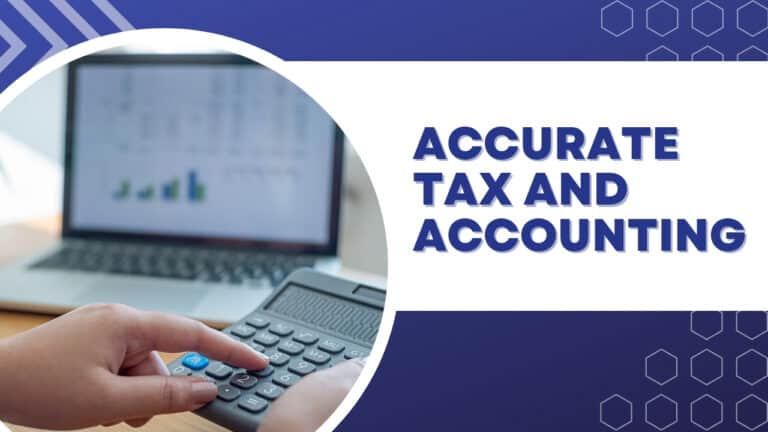What is the Principle of Equal Debit and Credit Amounts?
Have you ever wondered how businesses keep their financial records in check? It’s all about what is the principle of equal debit and credit amounts. This principle is like the heartbeat of accounting, ensuring that everything stays balanced and in harmony. But what does it really mean, and why is it so significant?? Let’s dive into this fascinating topic and explore the ins and outs of the principle of equal debit and credit amounts.
The Basics of Double-Entry Accounting
What is Double-Entry Accounting?
Double-entry accounting is a system that keeps the books balanced. It’s like a seesaw that needs to be perfectly balanced at all times. For every transaction, there is a corresponding and opposite entry. This means if you debit one account, you must credit another. Simple, right?
Why Double-Entry?
Imagine trying to keep track of your finances with just a single-entry system. It would be chaotic and prone to errors. Double-entry accounting helps prevent mistakes and provides a clear and accurate picture of a company’s financial health. It’s like having two eyes instead of one, giving you better depth perception.
Understanding Debits and Credits
What is a Debit?
In accounting, a debit is a record made on the left side of an account. It increases asset or expense accounts and decreases liability, revenue, or equity accounts. Think of it as money coming in or an increase in value.
What is a Credit?
An account credit is recorded as a debit’s opposite, appearing on the right-hand side of a ledger. It reduces the balance of asset or expense accounts while boosting the balance of liability, revenue, or equity accounts. It’s like money going out or a decrease in value.
How Do They Work Together?
Debits and credits work together to keep the books balanced. For each debit, an equal and matching credit is required. This ensures that the accounting equation (Assets = Liabilities + Equity) stays in balance.
The Principle of Equal Debit and Credit Amounts
What is the Principle?
The principle of equal debit and credit amounts means that for every financial transaction, the total amount debited must equal the total amount credited. It’s like balancing a mathematical equation at all times. This principle is fundamental to maintaining accurate financial records.
Why is it Important?
This principle is crucial because it ensures the integrity of financial data. Without it, errors and discrepancies could go unnoticed, leading to inaccurate financial statements. It’s like the foundation of a house; if it’s not solid, everything else can crumble.
How is it Applied?
Suppose a company purchases office supplies for $500. In the double-entry system, the office supplies account (an asset) is debited $500, and the cash account (another asset) is credited $500. The total debits equal the total credits, keeping the books balanced.
Real-Life Examples
Example 1: Purchasing Equipment
Imagine a company buys new equipment for $10,000. Here’s how it would be recorded:
- Debit Equipment Account: $10,000
- Credit Cash Account: $10,000
This transaction increases the equipment (asset) account while decreasing the cash (asset) account, keeping everything balanced.
Example 2: Receiving Payment from a Customer
Now, suppose a customer pays $1,000 for services rendered. The transaction would be:
- Debit Cash Account: $1,000
- Credit Revenue Account: $1,000
This increases the cash (asset) account and the revenue (equity) account, maintaining the balance.
The Role of Journals and Ledgers
What is a Journal?
A journal is like a diary for a business’s financial transactions. You record each entry in chronological order, showing the debits and credits for each transaction. This is the first place you document transactions.
What is a Ledger?
A ledger is like a big book that summarizes all the journal entries. It organizes the transactions by account, making it easier to see the overall financial picture. The ledger helps ensure that the principle of equal debit and credit amounts is followed.
Common Mistakes and How to Avoid Them
Mistake 1: Not Balancing Debits and Credits
One of the most common mistakes is not ensuring that debits equal credits. This can lead to inaccurate financial statements. Always double-check your entries to avoid this error.
Mistake 2: Misclassifying Transactions
Another mistake is misclassifying transactions. For example, recording a revenue transaction as an expense. This can throw off the balance and lead to errors. Make sure you understand which accounts to debit and credit.
Mistake 3: Overlooking Adjustments
Sometimes, adjustments need to be made at the end of an accounting period. Overlooking these can cause imbalances. Always review your entries and make necessary adjustments.
Tips for Maintaining Balance
Tip 1: Use Accounting Software
Accounting software can help automate the process and reduce errors. It always balances the debits and credits.
Tip 2: Regularly Reconcile Accounts
Regularly reconciling accounts can help catch errors early. This involves comparing your records to external statements to ensure everything matches.
Tip 3: Keep Detailed Records
Detailed records can help identify and correct errors quickly. Make sure to document every transaction accurately.
The Impact on Financial Statements
What are Financial Statements?
Financial statements are documents that display a company’s financial performance. They encompass the balance sheet, income statement, and cash flow statement.
How Does the Principle Affect Financial Statements?
The principle of equal debit and credit amounts ensures that financial statements are accurate. It helps prevent errors and discrepancies that can mislead stakeholders.
Conclusion
So, what is the principle of equal debit and credit amounts? It’s a fundamental concept in accounting that ensures every financial transaction is balanced. By following this principle, businesses can maintain accurate records and provide reliable financial information. Whether you’re an accountant or a business owner, understanding this principle is key to keeping your financial house in order.
Unlock Your Financial Potential with Our Expert Services!
At A&I Financials, we specialize in helping businesses maintain accurate financial records. Our experts always balance your books, giving you peace of mind and accurate financial statements. If you need assistance with accounting, bookkeeping, or tax services, we’re here to help. Reach out to us today to discover how we can assist in supporting your business.
FAQs on the Principle of Equal Debit and Credit Amounts
The principle of equal debit and credit amounts ensures that for every financial transaction, the total amount debited equals the total amount credited. This keeps the accounting equation balanced and maintains accurate financial records.
This principle is crucial because it maintains the integrity of financial data. It helps prevent errors and discrepancies, ensuring that financial statements are accurate and reliable.
Double-entry accounting is based on this principle. It requires every transaction to be recorded with equal debits and credits, ensuring that the accounting equation (Assets = Liabilities + Equity) remains balanced.
If debits and credits are not equal, it indicates an error in the accounting records. This can lead to inaccurate financial statements and misinform stakeholders about the company’s financial health.
Yes, accounting software can automate the process of recording transactions, ensuring that debits and credits are always equal. This reduces the risk of human error and helps maintain accurate financial records.







